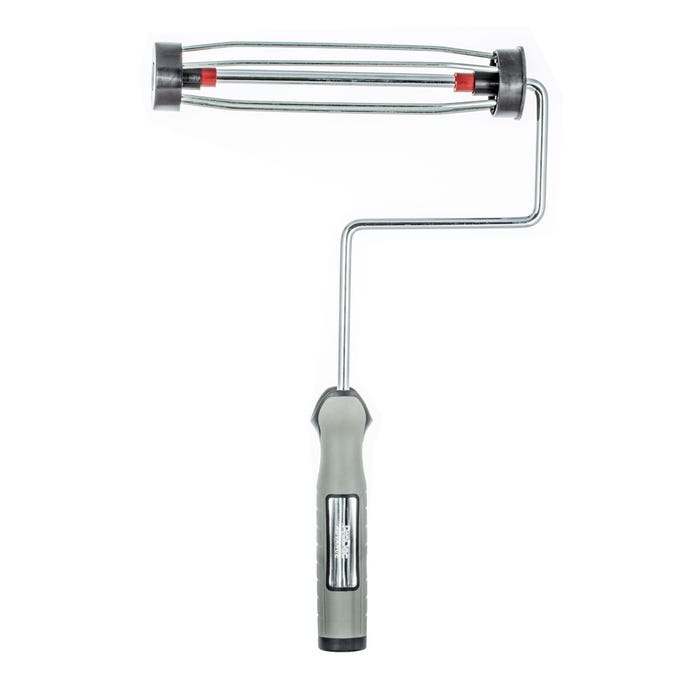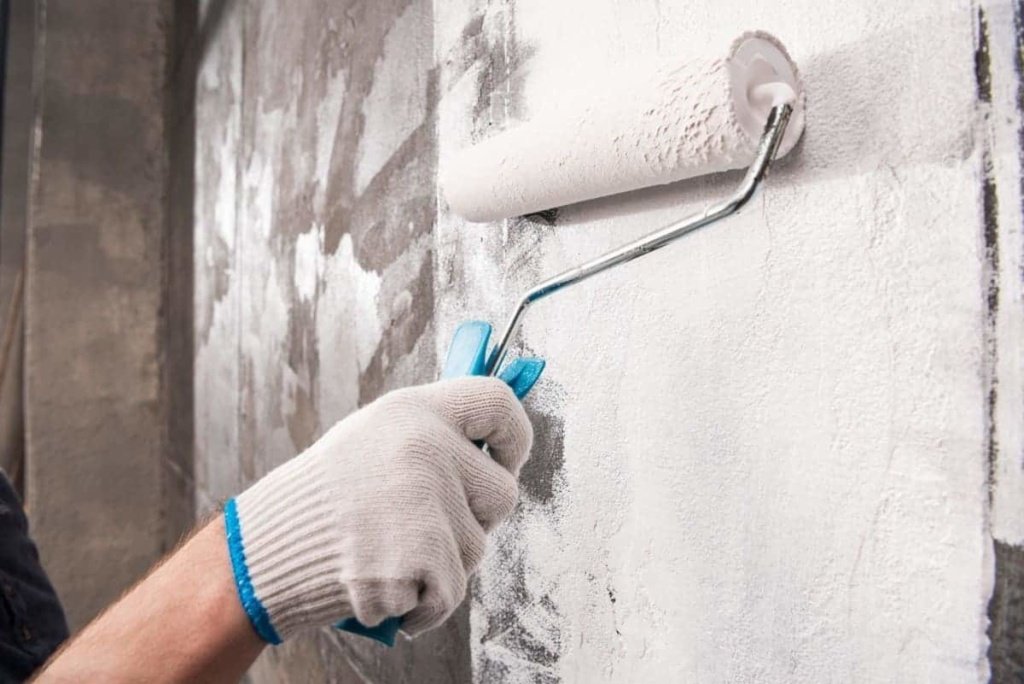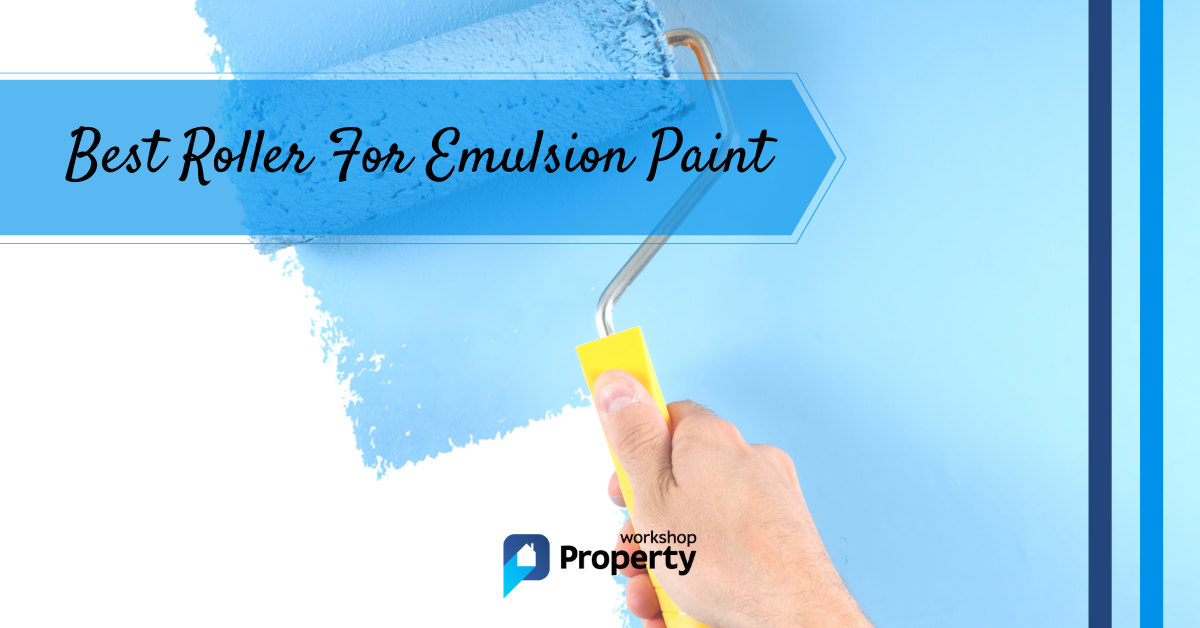Property Workshop is proudly reader-supported. When you buy through links on our site, we may earn a small Amazon affiliate commission but this does not affect the price you pay. Learn more here.
There are plenty of paint rollers to choose from in the UK, but only a few of them are worth your hard-earned money.
At Property Workshop, we’ve spent hours testing the most popular paint rollers to find the best roller for emulsion.
To avoid making a costly mistake, both in time and money, keep reading to find out which roller takes the #1 spot.
If you’re looking for a roller and sleeve combo, you can’t go wrong with the above set. If you want to buy your roller and sleeve separately, read on.
What’s the Best Roller for Emulsion?
If you’re applying silk emulsion, go for a short-pile mohair roller. For matt emulsion, opt for a medium-pile sheepskin roller. Don’t use spongy foam rollers with emulsion paints because they create air bubbles in the paint film. A short pile roller is best for extremely fine or flat surfaces.
Paint Rollers — 2024 Buying Guide
Rollers come in two parts: the frame and the sleeve. The sleeve is disposable, and you should carefully select the right one for each job.
Frame
When it comes to picking the right frame, apply some common sense. For example, go for a long handle or telescopic pole (or a ladder) to reach a high ceiling.
Frame handles come in wood, plastic or synthetic materials. You’ll find wood is less easy to clean, so we recommend avoiding it.
At PWS, we highly recommend this frame from ProDec:

ProDec 9" Titan Roller Frame
- Durable cage frame with 25% thicker cage wire
- No break handle
- Locking nut
- Nylon bushes
- Screw fitting
- Lifetime guarantee
Sleeve
Choosing the right sleeve for each job is based on the following criteria:
- The type of surface being painted
- The type of product being applied. E.g. paint, stain or varnish
- The desired finish
8 Types of Sleeves
There are seven common types of sleeves, each with its particular use:
- Foam sleeve
- Staining sleeve
- Lacquering sleeve
- Medium pile sleeve
- Long pile sleeve
- Short pile sleeve
- Honeycomb sleeve
Note: The sleeve’s pile (or nap) is the length of the roller’s hair.
Sleeve Material
Sleeves can be composed of synthetic or natural fibres or sometimes a mixture.
- Synthetic fibres are best suited for oil-based paint.
- Natural fibres are best suited for emulsion paint
Roller Sizes
Rollers come in various widths, anywhere from 90mm to 450mm, which all have their particular purpose. While there’s no exact right or wrong width, remember that the larger the surface, the wider the roller.
What to Avoid When Buying Paint Rollers
Avoid cheap paint rollers made with cardboard tubes. These rollers eventually get so damp that the bristles and foam come loose.
Roller or Brush?
Before we get into our roller recommendations, let’s first establish if a roller or paintbrush is best for your project.
Roller
Rollers save time and energy when painting large flat surfaces (e.g. walls and ceilings), producing a much evener coat than a paintbrush.
Brush
Use a paintbrush when painting edges and corners where rollers can’t entirely cover. This technique is known as ‘cutting in’. POUSE around the HOUSE offers a quick tutorial on how to do this in this beginner’s guide for DIY painting.
Best Roller for Emulsion — 2024 Recommendations

Whether natural or synthetic, fibre rollers are great for applying oil-based paint. However, you should only apply emulsion paint with a natural fibre roller because they hold more paint and splash a lot less.
It’s essential to have a roller that doesn’t splash paint when using emulsion paint since emulsion is nearly impossible to wash off once dried.
Textured Surfaces
If you’re painting a textured wall or artexed ceiling, go for a Mohair sleeve like the one below:

ProDec 9" Mohair Roller Sleeves
- Mohair glossing fabric, reproduced using modern synthetic technology
- Great durability and shed-free
- Provides an excellent finish with gloss and satin paints
- Suitable for low-viscosity wood stains
Mohair is the hair from Angora goats. A lot of professional painters prefer these rollers because they are absorbent.
A more absorbent roller means you spend less time reapplying paint, which will help get the job done faster. It also helps the paint go on smoothly and evenly.
Lambswool rollers are also great for emulsion-based paints for similar reasons.
Although natural fibres like mohair and lambswool tend to be more expensive, they’re well worth the extra expense when painting textured surfaces.
You can save and reuse your rollers by storing them in a plastic bag (so the emulsion doesn’t dry) and then washing them thoroughly.
Smooth Surfaces
For a smooth plastered wall, go for a high-quality, woven sleeve like the one below:

ProDec 9" Woven Roller Sleeves
- Woven acrylic roller
- Suitable for a wide range of paint and surface types
- 9” for small to medium interior areas
Final Thoughts
There are many types of paint rollers for different purposes. Sometimes knowing the best roller for the job isn’t always easy to figure out. Again, if you’re looking for a complete set, we highly recommend the one below from Harris:

Harris 9" Roller Set
- Fantastic coverage and a fine finish
- Extra light aluminium roller frame
- Comfortable grip handle
- Accepts screw thread extension pole

